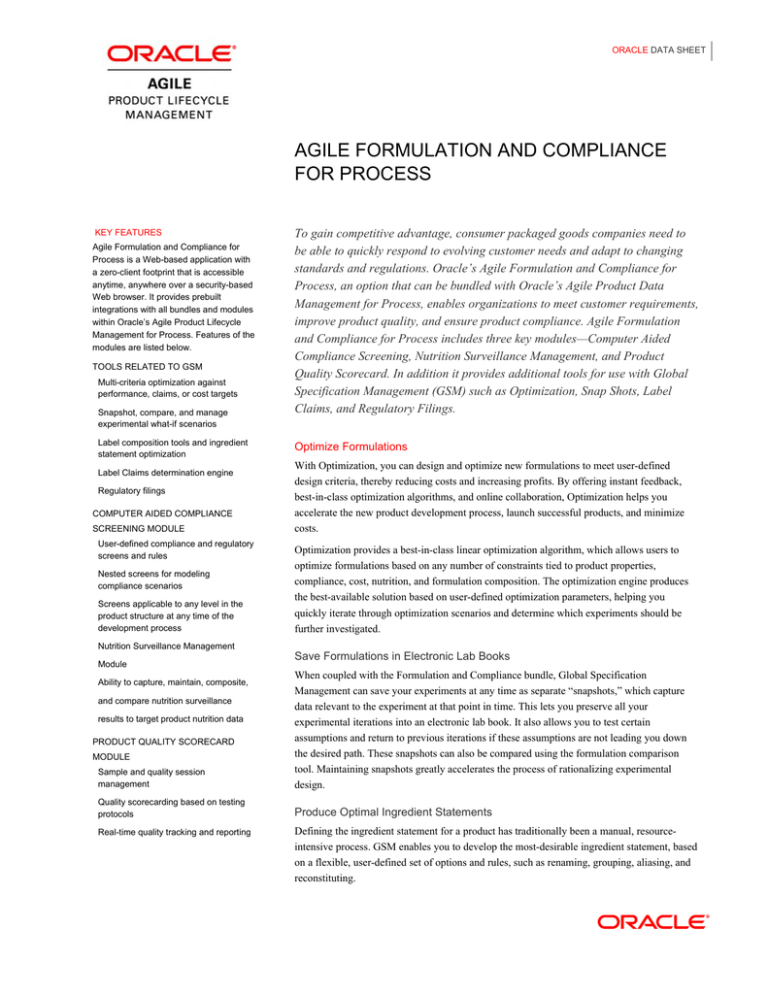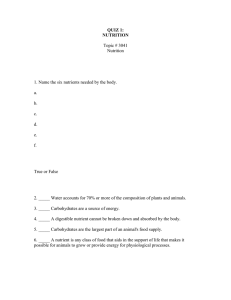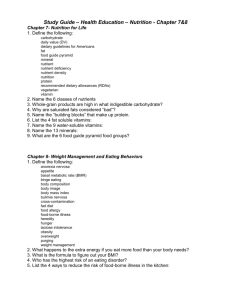
ORACLE DATA SHEET
AGILE FORMULATION AND COMPLIANCE
FOR PROCESS
KEY FEATURES
Agile Formulation and Compliance for
Process is a Web-based application with
a zero-client footprint that is accessible
anytime, anywhere over a security-based
Web browser. It provides prebuilt
integrations with all bundles and modules
within Oracle’s Agile Product Lifecycle
Management for Process. Features of the
modules are listed below.
TOOLS RELATED TO GSM
Multi-criteria optimization against
performance, claims, or cost targets
Snapshot, compare, and manage
experimental what-if scenarios
Label composition tools and ingredient
statement optimization
Label Claims determination engine
Regulatory filings
COMPUTER AIDED COMPLIANCE
SCREENING MODULE
User-defined compliance and regulatory
screens and rules
Nested screens for modeling
compliance scenarios
Screens applicable to any level in the
product structure at any time of the
development process
To gain competitive advantage, consumer packaged goods companies need to
be able to quickly respond to evolving customer needs and adapt to changing
standards and regulations. Oracle’s Agile Formulation and Compliance for
Process, an option that can be bundled with Oracle’s Agile Product Data
Management for Process, enables organizations to meet customer requirements,
improve product quality, and ensure product compliance. Agile Formulation
and Compliance for Process includes three key modules—Computer Aided
Compliance Screening, Nutrition Surveillance Management, and Product
Quality Scorecard. In addition it provides additional tools for use with Global
Specification Management (GSM) such as Optimization, Snap Shots, Label
Claims, and Regulatory Filings.
Optimize Formulations
With Optimization, you can design and optimize new formulations to meet user-defined
design criteria, thereby reducing costs and increasing profits. By offering instant feedback,
best-in-class optimization algorithms, and online collaboration, Optimization helps you
accelerate the new product development process, launch successful products, and minimize
costs.
Optimization provides a best-in-class linear optimization algorithm, which allows users to
optimize formulations based on any number of constraints tied to product properties,
compliance, cost, nutrition, and formulation composition. The optimization engine produces
the best-available solution based on user-defined optimization parameters, helping you
quickly iterate through optimization scenarios and determine which experiments should be
further investigated.
Nutrition Surveillance Management
Module
Save Formulations in Electronic Lab Books
Sample and quality session
management
When coupled with the Formulation and Compliance bundle, Global Specification
Management can save your experiments at any time as separate “snapshots,” which capture
data relevant to the experiment at that point in time. This lets you preserve all your
experimental iterations into an electronic lab book. It also allows you to test certain
assumptions and return to previous iterations if these assumptions are not leading you down
the desired path. These snapshots can also be compared using the formulation comparison
tool. Maintaining snapshots greatly accelerates the process of rationalizing experimental
design.
Quality scorecarding based on testing
protocols
Produce Optimal Ingredient Statements
Ability to capture, maintain, composite,
and compare nutrition surveillance
results to target product nutrition data
PRODUCT QUALITY SCORECARD
MODULE
Real-time quality tracking and reporting
Defining the ingredient statement for a product has traditionally been a manual, resourceintensive process. GSM enables you to develop the most-desirable ingredient statement, based
on a flexible, user-defined set of options and rules, such as renaming, grouping, aliasing, and
reconstituting.
ORACLE DATA SHEET
Additionally, you can restrict the construction of ingredient statements to the rules issued by
specific government agencies, such as the U.S. Food and Drug Administration, U.S.
Department of Agriculture, and Canadian Food Inspection Agency. You can capture all
changes into an audit trail for justification and express the resulting ingredient statement as a
combined or multipart statement. GSM allows you to improve the efficiency of the ingredient
statement development process and deliver more complete and accurate ingredient statements.
Determine Applicable Label Claims
With the label claims determination engine you can calculate which label claims are
applicable to the finished products based on nutrient data and reference products (if
applicable). Multiple regulatory agency rulesets can be maintained and stored inside Global
Specification Management.
Regulatory Filings
Regulatory Filings allows you to generate supplemental documentation to help stream line the
regulatory process. These documents reflect current and accurate data since it is directly
integrated with the Global Specification Management module.
Computer Aided Compliance Screening
The Computer Aided Compliance Screening module of Agile Formulation and Compliance
for Process enables you to inspect products for compliance against any number of userdefined screens. The compliance screens can include regulatory, market-driven, or customerdriven constraints and can be applied at any level in the product structure, from raw materials
to finished product. By screening for compliance during the product development cycle, you
can detect compliance issues early, thus lowering development, rework, recall, and withdrawal
costs.
Improve Product Compliance
Computer Aided Compliance Screening lets you build screening rules to interrogate raw
materials, intermediates, and finished products for fitness against particular compliance
constraints at multiple points in the product development process. With Computer Aided
Compliance Screening, the ability to check for compliance is fully embedded into the new
product development, formulation, and specification processes, allowing you to detect
compliance issues early.
Configure Compliance Screens for Specific Needs
You can build rules and screens into Computer Aided Compliance Screening to check raw
materials, intermediates, and finished products against a number of parameters, including:
Presence and concentration of allergens, additives, and intolerances
General compliance such as kosher, organic, and non-GMO
Nutrients
Specification attributes
Known usage restrictions, such as business unit and country
Custom attributes
Computer Aided Compliance Screening allows you to nest the screens to enable complex
compliance scenarios in a modular way.
2
ORACLE DATA SHEET
AGILE PRODUCT LIFECYCLE
MANAGEMENT
Agile Product Lifecycle Management for
Process is a fully integrated,
comprehensive suite of software and
services for collaborative product lifecycle
management in the consumer packaged
goods industry. Agile Product Lifecycle
Management for Process solutions
provide visibility across product portfolios,
projects, activities, and suppliers, allowing
you to achieve optimal results from your
innovation efforts.
RELATED PRODUCTS
Agile Product Data Management for
Process
Agile New Product Development and
Introduction for Process
Agile Product Quality Management for
Process
Agile Supplier Collaboration for Process
Oracle Product Lifecycle Analytics
Oracle Design to Release Integration
Pack For E-Business Suite
Obtain Immediate Feedback on Compliance Status
With Computer Aided Compliance Screening, you can obtain immediate feedback on
compliance issues through a red or green color code on a compliance screen. At any time
during the product development process, you will be able to look deeper into the results to
find the root causes of any compliance deviation and implement remedies.
Nutrition Surveillance Management
The Nutrition Surveillance Management module of Agile Formulation and Compliance for
Process allows you to accurately track nutrition surveillance results and compare them to the
existing nutrient values for finished products or ingredients. You can tie nutrient data from the
Nutrition Surveillance Management module to individual samples, or composite it to reflect a
weighted average of nutrient data from several samples. You can opt to either enter the data
directly into the user interface or push it via Web services integration from external systems,
such as laboratory information management systems (LIMS). Additionally, you can compare
results with existing nutrient profiles, to which you can easily apply required changes to
reflect the newer surveillance information.
Nutrition Surveillance Management serves as a clearinghouse and repository for all enterprise
nutrient information, providing a single location for all historical nutrient data. Nutrition
Surveillance Management, when integrated with Global Specification Management, provides
you with a closed-loop nutrition management solution.
Implement a Closed-Loop Nutrition Management Process
Nutrition Surveillance Management allows you to capture, store, and manage nutrient data on
ingredients and finished products. At any time, you can compare these observed nutrient
values to the nutrient data in specifications stored in Global Specification Management,
ensuring that valid and accurate nutrient information is maintained for each product and
material specification.
Capture Data through a User Interface or Web Services Integration
Nutrition Surveillance Management lets users easily enter data via a user interface.
Additionally, a Web services-based integration allows for seamless data transfer from LIMS,
eliminating the need for manual data entry, reducing errors due to data re-entry, and
increasing productivity.
Maintain and Integrate Nutrient Data
Nutrition Surveillance Management allows you to maintain and use nutrient data in a single
tool. You can compare and leverage the data captured in Nutrition Surveillance Management
and use it to update the specification data in Global Specification Management. This ensures
that the specification data used for design and labeling reflects what is observed through the
company nutrition surveillance program.
Composite Sample Values
Nutrition Surveillance Management lets you composite sample values to obtain representative
nutrient values from a number of sample analyses. This is useful when analysis data is
obtained from multiple suppliers or labs. You can use the composites for comparison to the
specifications stored in Global Specification Management.
Compare Nutrient Data
Nutrition Surveillance Management is equipped with a reporting and comparison engine that
allows for comparison between observed nutrient surveillance values and those currently on
nutrient profiles stored at the ingredient or finished product level. Additionally, the
3
ORACLE DATA SHEET
comparison tool allows for comparison and analysis of historical nutrient data stored in Global
Specification Management so that you can better understand long-term trends.
Product Quality Scorecard
The Product Quality Scorecard module of Agile Formulation and Compliance for Process
enables the tracking and disposition of product nonconformance, root cause remediation,
prevention, and continuous quality improvement. Leveraging a flexible, user-defined
scorecard architecture, you will be able to specify criteria to be used in evaluating product
quality and performance, weighting each criterion based on important factors such as
criticality to brand or risk. You can use Product Quality Scorecard for a variety of purposes,
including consumer testing, sensory evaluation, product cuttings, and competitive
benchmarking.
Manage Conformance to Specifications
Product Quality Scorecard lets you measure conformance to the specifications stored in the
Global Specification Management module—across ingredients and finished products. You can
link specifications to testing protocols, which allows you to convert analytical properties into
a scoring template, and in particular, define scoring based on qualitative criteria. Additionally,
you can arrange analytical properties into sections, which can be associated with separate
scoring methods. The testing protocols link the product quality targets embedded into the
specifications and the conformance to those quality targets.
Manage Samples
Product Quality Scorecard allows you to manage and track quality samples for identification
and traceability back to suppliers. You can also store any related documentation against the
sample if necessary.
Track Product Conformance
Product Quality Scorecard lets you create evaluation sessions for one or more evaluators
against any number of product samples. You can link specific testing protocols to these
samples to determine how they will be tested. You can then perform the product evaluations
based on scorecards that are automatically created using the testing protocol. The individual
score and notes attached to each individual property, as well as the scoring by section and in
total, are stored in the Product Quality Scorecard database.
Analyze Product Conformance
Product Quality Scorecard provides real-time visibility to quality nonconformance across
ingredients and finished goods, enabling you to quickly access product conformance
information across multiple sourcing or usage locations. You can also configure Product
Quality Scorecard data into customized reports, such as evaluation session results, Pareto
charts, sample comparisons, supplier benchmarks, and supplier trends. As a foundation for
quality benchmarking, Product Quality Scorecard offers a valuable tool for you to identify
trends and measure quality conformance throughout the product lifecycle.
4
ORACLE DATA SHEET
Contact Us
For more information about Oracle’s Agile Formulation and Compliance for Process, visit oracle.com or call +1.800.ORACLE1 to speak to
an Oracle representative.
Copyright © 2013, Oracle and/or its affiliates. All rights reserved.
This document is provided for information purposes only, and the contents hereof are subject to change without notice. This document is not warranted to be error-free, nor subject
to any other warranties or conditions, whether expressed orally or implied in law, including implied warranties and conditions of merchantability or fitness for a particular purpose.
We specifically disclaim any liability with respect to this document, and no contractual obligations are formed either directly or indirectly by this document. This document may not
be reproduced or transmitted in any form or by any means, electronic or mechanical, for any purpose, without our prior written permission.
Oracle and Java are registered trademarks of Oracle and/or its affiliates. Other names may be trademarks of their respective owners.
Intel and Intel Xeon are trademarks or registered trademarks of Intel Corporation. All SPARC trademarks are used under license and are trademarks or registered trademarks of
SPARC International, Inc. AMD, Opteron, the AMD logo, and the AMD Opteron logo are trademarks or registered trademarks of Advanced Micro Devices. UNIX is a registered
trademark of The Open Group. 0113
5




